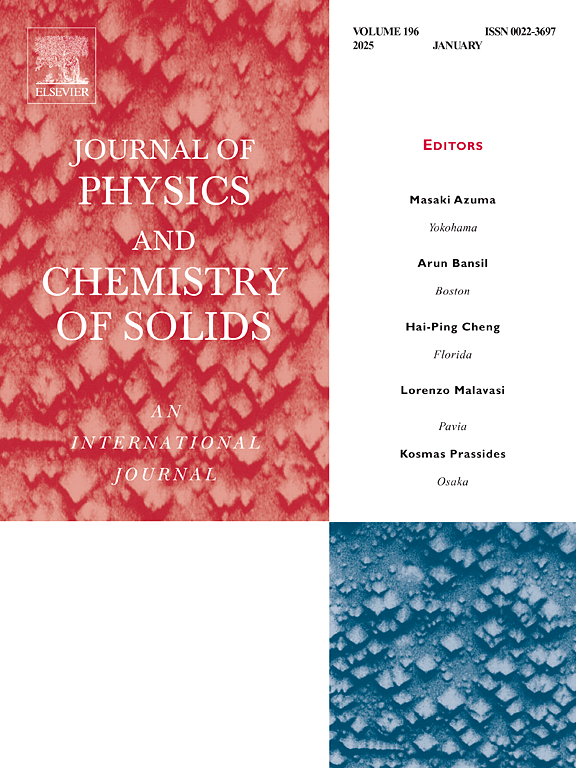揭示二维GeN3单层的多方面稳定性:碱离子电池应用的潜在阳极
IF 4.9
3区 材料科学
Q2 CHEMISTRY, MULTIDISCIPLINARY
引用次数: 0
摘要
锂离子电池(Li)和钠离子电池(sib)的工作原理相似,在储能应用中非常有效。在过去的十年中,二维(2D)材料作为lib和SIBs阳极的使用由于其独特的层状结构,广泛的平面表面和丰富的活性位点而取得了显着的进展。利用第一性原理计算(DFT),我们研究了二维单层GeN3的表面化学性质和重要的相关参数,以研究其作为lib和sib的潜在阳极材料的应用。根据从头算分子动力学(AIMD)模拟,GeN3单层在高达1000 K的温度下表现出强大的热力学稳定性。此外,Li和Na与GeN3单层上的一个有利位点表现出强烈的结合相互作用,同时基本电荷(q)从Li+/Na+转移到GeN3薄片,从而证实了Li+/Na+与主体材料之间的电化学反应。此外,锂离子和钠离子在GeN3单层中的最大理论存储容量分别为467.4和350.6 mA h g−1。当前研究的这些令人信服的结果为lib和sib的进展建立了理论和技术框架。本文章由计算机程序翻译,如有差异,请以英文原文为准。

Unveiling the multifaceted stability of a two-dimensional GeN3 monolayer: A potential anode for alkali-ion battery applications
Lithium (Li) and sodium-ion batteries (SIBs) operate on similar principles and are highly effective for energy storage applications. Over the past decade, the use of two-dimensional (2D) materials as both the LIBs and SIBs anode has made remarkable progress due to their unique layered structures, extensive planar surfaces, and abundantly accommodating active sites. Using first-principles calculations (DFT), we examined the surface chemistry and important related parameters of a two-dimensional monolayer GeN3 for its application as a potential anode material for LIBs and SIBs. GeN3 monolayer exhibits robust thermodynamic stability up to 1000 K, according to ab initio molecular dynamics (AIMD) simulations. Moreover, Li and Na show strong binding interactions with one of the favorable sites on the GeN3 monolayer, along with essential charge (q) transfer from Li+/Na+ to the GeN3 sheet, thereby confirming the electrochemical reaction between Li+/Na+ and the host material. In addition, the maximum theoretical storage capacity obtained for Li-ion and Na-ion in the GeN3 monolayer is 467.4 and 350.6 mA h g−1, respectively. These compelling results from the current study establish a theoretical and technical framework for the progress of LIBs and SIBs.
求助全文
通过发布文献求助,成功后即可免费获取论文全文。
去求助
来源期刊
CiteScore
7.80
自引率
2.50%
发文量
605
审稿时长
40 days
期刊介绍:
The Journal of Physics and Chemistry of Solids is a well-established international medium for publication of archival research in condensed matter and materials sciences. Areas of interest broadly include experimental and theoretical research on electronic, magnetic, spectroscopic and structural properties as well as the statistical mechanics and thermodynamics of materials. The focus is on gaining physical and chemical insight into the properties and potential applications of condensed matter systems.
Within the broad scope of the journal, beyond regular contributions, the editors have identified submissions in the following areas of physics and chemistry of solids to be of special current interest to the journal:
Low-dimensional systems
Exotic states of quantum electron matter including topological phases
Energy conversion and storage
Interfaces, nanoparticles and catalysts.

 求助内容:
求助内容: 应助结果提醒方式:
应助结果提醒方式:


